Background Avascular necrosis (AVN) of the humeral head is a severe complication after proximal humerus fracture dislocations, and leads to a poorer clinical outcome and subsequent revision surgeries The aim of the current study was to analyze the influence of time to surgery on the AVN rate after locked plating of dislocation fractures of the proximal humerus1 2 shaft fracture;Patients from a singlecenter randomized controlled study of fifty patients aged 60 or above with displaced proximal humeral fracture (AO/OTA group B2 or C2) were randomized to surgical or

Proximal Humerus Anatomy Anatomy Drawing Diagram
Proximal humerus fracture ao classification
Proximal humerus fracture ao classification-A humerus fracture is a break of the humerus bone in the upper arm Symptoms may include pain, swelling, and bruising There may be a decreased ability to move the arm and the person may present holding their elbow Complications may include injury to an artery or nerve, and compartment syndrome The cause of a humerus fracture is usually physical trauma such as a fallNeer CS 2nd Displaced proximal humeral fractures I Classification and evaluation J Bone Joint Surg Am 1970 Sep;52(6)1077–10 Majed A, Macleod I, Bull AM, et al Proximal humeral fracture classification systems revisitedJ Shoulder Elbow Surg 11 Oct;(7)1125–1132 Sjoden GO, Movin T, Guntner P, et al Poor reproducibility of classification of proximal humeral fractures
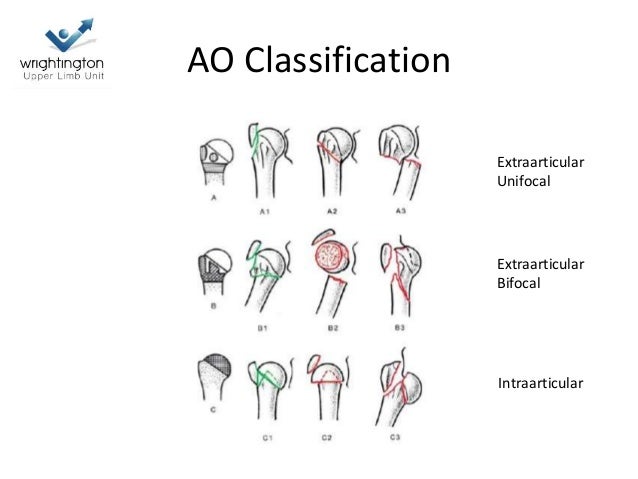


Proximal Humeral Fractures
Introduction Proximal humerus fractures (PHF) account for 6% of all fractures and are the third most common type of osteoporotic fracture after those in the wrist and hip 1,2 These fractures are associated with low bone mineral density (BMD) and increase in incidence after the age of 50 (3) Osteoporotic fractures range in incidence from 40–50% in women to 13–42% in men over a humanBackground Proximal humeral fractures are considered the last unsolved fractures in orthopaedics The treatment is controversial and various operative modalities have been reported in the literature The aim of the present study was to evaluate functional outcome and complication rate after open reduction and internal fixation of displaced proximal humerus fractures by proximal humerus AOChapter 62 AO/ASIF Fracture Classification Fig 621 AO/ASIF fracture classification Proximal Humerus Fig 622 AO/ASIF fracture classification proximal humerus Humeral Shaft Fig 623 AO/ASIF f
AO/OTA Classification Based on fracture location and the presence of impaction, angulation, translation, comminution, or dislocation;AO classification of proximal humeral fractures Assoc Prof Craig Hacking and Assoc Prof Frank Gaillard et al The AO classification of proximal humeral fractures, along with the Neer classification, is one of the most frequently used systems for classifying proximal humeral fractures The AO classification divides proximal humeral fractures into three groups, A, B and C, each with subgroups, and places more emphasis on the blood supply to the articular surface 1,2Introduction Proximal humerus fractures (PHF) account for 6% of all fractures and are the third most common type of osteoporotic fracture after those in the wrist and hip 1,2 These fractures are associated with low bone mineral density (BMD) and increase in incidence after the age of 50 (3) Osteoporotic fractures range in incidence from 40–50% in women to 13–42% in men over a human
4 Synthes 35 mm LCP Proximal Humerus Plates Technique Guide AO Principles In 1958, the AO formulated four basic principles, which have become the guidelines for internal fixation1 They are Anatomic reduction Fracture reduction and fixation to restore anatomical rela% nonunion in AO/OTA type A fractures 11% of humeral shaft fractures – 2% proximal 1/3 Closed Humerus Fracture RNP after closed reduction C ONCLUSION Non op treatment continues to be gold std but outcomes may not be as good as initially thoughtEach fracture type is further subgrouped according to displacement, valgus or varus angulation of the humeral head, comminution and the presence and direction of glenohumeral joint dislocation



Proximal Humerus Fractures Classifications The Neer Ao Other Doctor Shoulder



Proximal Humerus Approach Deltopectoral Approach To The Proximal Humerus Ao Surgery Reference Pdf Document
AO Surgery Reference is an internetbased resource for the management of fractures, based on current clinical principles, practices and available evidence It describes the complete surgical management process from diagnosis to aftercare for fractures in a given anatomical region, and also assembles relevant published AO materialA proximal humerus fracture is a break of the upper part of the bone of the arm ( humerus ) Symptoms include pain, swelling, and a decreased ability to move the shoulder Complications may include axillary nerve or axillary artery injury The cause is generally a fall onto the arm or direct trauma to the armAO Classification and Coding System for Humeral Fractures The humerus is assigned the number " 1 " based on the AO system and is further divided into three zones 1 1 proximal fracture;
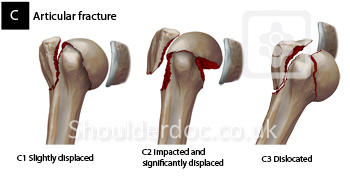


Proximal Humerus Fracture Classifications Shoulderdoc



Jaypeedigital Ebook Reader
Monga P, Verma R, Sharma VK Closed reduction and external fixation for displaced proximal humeral fractures J Orthop Surg (Hong Kong) 09 Aug 17 (2)1425 Yang H, Li Z, Zhou F, Wang D, Zhong B A prospective clinical study of proximal humerus fractures treated with a locking proximal humerus plate J Orthop Trauma 11 Jan 25 (1)117AO/OTA Classification Based on fracture location and the presence of impaction, angulation, translation, comminution, or dislocation;A bone fracture (abbreviated FRX or Fx, F x, or #) is a medical condition in which there is a partial or complete break in the continuity of the boneIn more severe cases, the bone may be broken into several pieces A bone fracture may be the result of high force impact or stress, or a minimal trauma injury as a result of certain medical conditions that weaken the bones, such as osteoporosis


Acknowledgement Ao Faculty Lecture Archive Ppt Video Online Download



Humerus Ao Ota Classification Reprinted With Permission Copyright By Download Scientific Diagram
AO/OTA Classification Based on fracture location and the presence of impaction, angulation, translation, comminution, or dislocation;621 Humerus, proximal Stability and displacement are often interdependent In many cases the fracture fragments are held together by muscles, ten dons (including the rotator cuff), and periosteum Treatment of these fractures—especially in elderly patients—has traditionally been nonoperative 3 with a predictable outcome andProximal humeral fractures newer methods and results AO Trauma Course Principles in Operative Fracture Management Lecturer Matthew R Camuso Duration 2238 minutes Level of knowledge Intermediate Proximal Humeral Fractures Nonoperative Care And When It Is Appropriate AO Trauma Masters Course Current Concpets Lecturer John Williams


Acta Chirurgiae Orthopaedicae Et Traumatologiae Cechoslovaca



Ao Asif Fracture Classification Plastic Surgery Key
We present a 5year prospective study of the epidemiology of 1,027 proximal humeral fractures These fractures, which tend to occur in fit elderly persons, have a unipolar age distribution and the highest agespecific incidence occurs in women between 80 and years of age The commonest was the B11 impacted valgus fracture, found in onefifth of the cases in this series, a type that is not included in the Neer classification1 2 shaft fracture;AO Surgery Reference is an internetbased resource for the management of fractures, based on current clinical principles, practices and available evidence It describes the complete surgical management process from diagnosis to aftercare for fractures in a given anatomical region, and also assembles relevant published AO material


Mio Plate Fixation For 4 Part Slight Displacement Varus Malalignment



Proximal Humerus Fracture Wikipedia
Houwert R, van Heijl M, Smeeing D, et al Similar functional outcome between nonoperative and operative treatment for proximal humerus fractures J Shoulder Elbow Surg 18;27(8) AO Principles of Fracture Management is an essential resource for orthopedic trauma surgeons and residents in these specialtiesWe help you diagnose your Proximal humerus case and provide detailed descriptions of how to manage this and hundreds of other pathologiesA proximal humerus fracture is a crack or break in the top of your upper arm bone The proximal humerus is one of the bones in your shoulder joint



Proximal Humeral Fracture Dislocation Ao Classification Image Radiopaedia Org
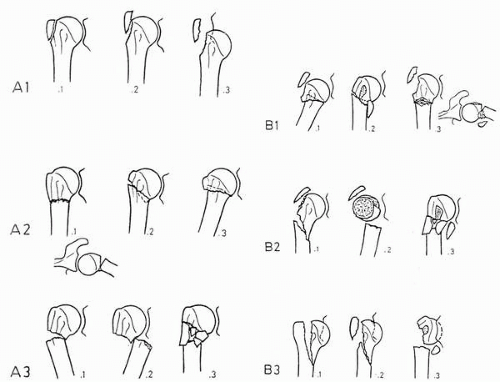


Fractures Musculoskeletal Key
The fractures were classified according to the Neer and the AO/OTAclassification by two experienced trauma surgeons with a special interest in proximal humeral fractures in a consensus conference Based on plain radiographs and CTscans Kettler et al 26 classified 225 displaced 2, 3 and 4part fractures (mean age 66) in patientsProximal Humerus Fracture AO Classification Müller M, In Manual of internal fixation, , 19 A Extraarticular unifocal fracture A1 Extraarticular unifocal tuberosity fracture 1 Gr Tuberosity, not displaced 2 Gr Tuberosity, displaced 3 associated with GH dislocation Extraarticular unifocal impacted metaphyseal fractureOur results show that when classifying proximal humeral fractures from plain Xrays there is greater intra and interobserver agreement if the Neer6 and Neer16 systems are used compared to the AO system This was also true when classifying proximal humeral fractures using crosssectional imaging
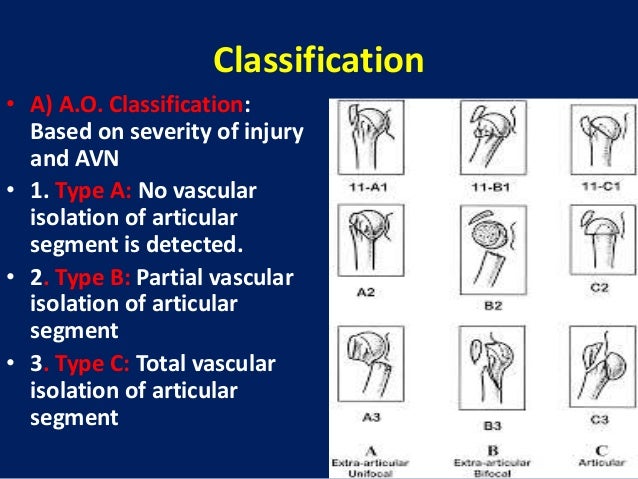


Fracture Proximal Humerus Fixation With K Wires And External Fixator



Figure 2 From Plating In Proximal Humeral Fractures Semantic Scholar
A humerus fracture is a break in the large bone of your upper arm There are several types of humerus fractures, depending on the location of the break We'll go over the locations of each typeThe remaining 66 fractures were located in the humeral shaft (AO region 12) There were 5 segmental fractures Of the remaining 67 fractures affecting the proximal third of the humeral shaft 493 percent extended into the humeral head 98 percent of these fractures displayed spiral morphologyAO Classification and Coding System for Humeral Fractures The humerus is assigned the number " 1 " based on the AO system and is further divided into three zones 1 1 proximal fracture;



A A 51 Year Old Male Patient Sustained Right Proximal Open I
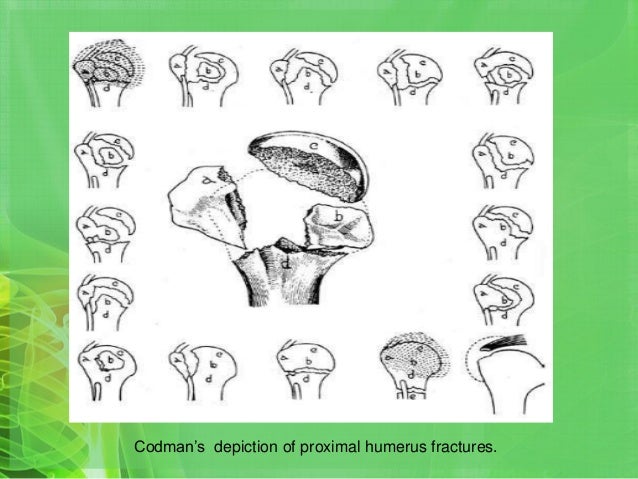


Proximal Humerus Fractures
AO Surgery Reference is an internetbased resource for the management of fractures, based on current clinical principles, practices and available evidence It describes the complete surgical management process from diagnosis to aftercare for fractures in a given anatomical region, and also assembles relevant published AO materialAnd 1 3 distal fracture (Plates 22 and 23) Clinical Epidemiologic Features of Humeral FracturesOutcome validation of the AO/OTA classification system Conclusions Ctype fractures had a significantly worse functional performance and impairment compared with Btype fractures, but Btype fractures were not statistically different from Atype fractures MF Swiontkowski et al 00 AO Classification 0 05 1 15 2 25 3 35 4 45 Impairment


Mio Plate Fixation For Extraarticular 3 Part Surgical Neck And Tuberosity Dislocation


Orif Screw Or Suture Fixation For Extraarticular 2 Part Greater Tuberosity Displaced
The Müller AO Classification of fractures is a system for classifying bone fractures initially published in 1987 by the AO Foundation as a method of categorizing injuries according to therognosis of the patient's anatomical and functional outcome "AO" is an initialism for the German "Arbeitsgemeinschaft für Osteosynthesefragen", the predecessor of the AO Foundation621 Humerus, proximal Stability and displacement are often interdependent In many cases the fracture fragments are held together by muscles, ten dons (including the rotator cuff), and periosteum Treatment of these fractures—especially in elderly patients—has traditionally been nonoperative 3 with a predictable outcome andProximal humerus fractures are common fractures often seen in older patients with osteoporotic bone following a simple groundlevel fall on an outstretched arm sling immobilization is the treatment for the majority of these fractures surgical treatment may be indicated in more complex and displaced fractures Epidemiology incidence



Proximal Humerus Reduction Amp Fixation Open Reduction Plate Fixation Ao Surgery Reference Princess Zelda Shoulder Arms Zelda Characters


Humerus Proximal Aocms
A bone fracture (abbreviated FRX or Fx, F x, or #) is a medical condition in which there is a partial or complete break in the continuity of the boneIn more severe cases, the bone may be broken into several pieces A bone fracture may be the result of high force impact or stress, or a minimal trauma injury as a result of certain medical conditions that weaken the bones, such as osteoporosisProximal humerus fracture rates will continue to increase with the aging population 57,58 and the concomitant rise in osteoporosis 50 These fractures can cause prolonged and severe disability and often are underestimated when compared with hip fractures 25 This will increase the demands on health providers further, and some suggest that society faces an epidemic of fractures in the elderlyThe transdeltoid lateral approach can be used for various treatments of the proximal humeral fractures It is especially useful for osteosynthesis of fractures of the greater tuberosity This incision is placed between the acromial part (2) and the spinal part (3) of the deltoid muscle, as illustrated



Proximal Humerus Fractures Trauma Orthobullets



Proximal Humeral Fractures Ppt Download
Methods Ninetyeight patients (mean age, 611 ± 112 years) with a proximal humeral fracture involving the anatomical neck (type C according to the OTA/AO classification system) were includedDespite recent modifications, the AO classification system for proximal humerus fractures plays a rather scientific role and—in contrast to other fracture sites—has not found its way into clinical use due to its complexity with a total of 27 subtypes 14, 15As a supplement to the CodmanHertel classification system, Resch proposed a classification addressing fracture angulation andEach fracture type is further subgrouped according to displacement, valgus or varus angulation of the humeral head, comminution and the presence and direction of glenohumeral joint dislocation
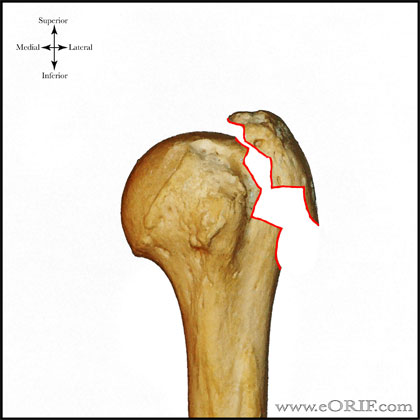


Proximal Humerus Fracture Classification Eorif


Deltopectoral Approach To The Proximal Humerus
Each fracture type is further subgrouped according to displacement, valgus or varus angulation of the humeral head, comminution and the presence and direction of glenohumeral joint dislocationThe remaining 66 fractures were located in the humeral shaft (AO region 12) There were 5 segmental fractures Of the remaining 67 fractures affecting the proximal third of the humeral shaft 493 percent extended into the humeral head 98 percent of these fractures displayed spiral morphologyFractures of the proximal humerus are a common fracture type These fractures are classifiedbased on anatomic location, mechanism of injury, displacement of the fracture fragments and vascular supply While some fractures of the proximal humerus are treated nonoperatively, many need operative treatment including displaced Two, Three and Four



Figure 1 From Functional Results Of Displaced Proximal Humerus Fractures In Children Treated By Elastic Stable Intramedullary Nail Semantic Scholar



The Three Types And Nine Groups Of The Ao Classification For Proximal Download Scientific Diagram
Medial approach to treat humeral midshaft fractures a retrospective study Complications Postoperative malrotation of humeral shaft fracture after plating compared with intramedullary nailing Fractures of the shaft of the humerus An epidemiological study of 401 fractures Traumatic segmental bone defects in the upper extremityThe most common classification for humeral shaft fractures is the AO classification It gives very thorough and detailed information on fracture morphology But it does not distinguish between fractures of the proximal humeral shaft and the more distal parts of the diaphysis (AO zone 12)And 1 3 distal fracture (Plates 22 and 23) Clinical Epidemiologic Features of Humeral Fractures


A Proximal Humerus Fracture Type Ao 11 Fracture And B Fixation Download Scientific Diagram
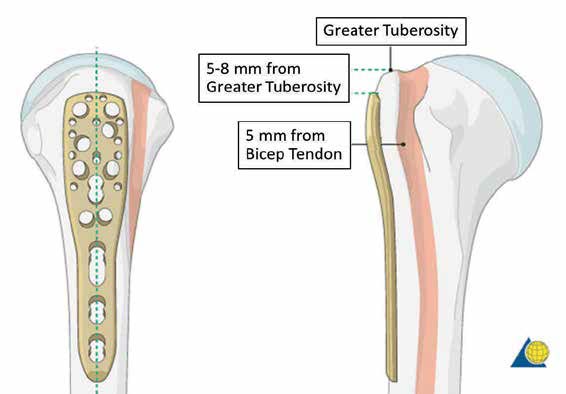


Results Of Proximal Humeral Fracture Fixation With Anatomical Locking Compression Plate Using 6 Stepwise Intraoperative Criteria In Surgical Procedures A Retrospective Study
Proximal locking For fractures of the proximal humerus with diaphyseal extension and combined fractures of the proximal humerus and the humeral diaphysis, the three lateral screws (greater tuberosity, levels A, B and D) must be used to ensure the basic stability of the construct For fractures of the humeral diaphysis, two of the threeFrom 1970 the most commonly used classification system for proximal humeral fractures has been the Neer classification followed by the AO classification Both classification systems describe morphological aspects of the fracture anatomy in an ordinal framework aiming to support diagnostics, treatment and prognosticsThe primary aim was to identify patient and injury factors independently associated with humeral diaphyseal fracture nonunion after nonoperative mana



Proximal Humerus Approach Anterolateral Approach Ao Surgery Reference Anatomical Terms Of Location Human Anatomy


Radial Head And Complex Elbow Injuries Aocms
The primary aim was to identify patient and injury factors independently associated with humeral diaphyseal fracture nonunion after nonoperative mana"The Neer classification of displaced proximal humeral fractures spectrum of findings on plain radiographs and CT scans" AJR Am J Roentgenol 154 (5) Page Views


Reverse Arthroplasty For Extraarticular 3 Part Surgical Neck And Greater Tuberosity Impaction


Hemiarthroplasty For Extraarticular 3 Part Surgical Neck And Tuberosity No Impaction
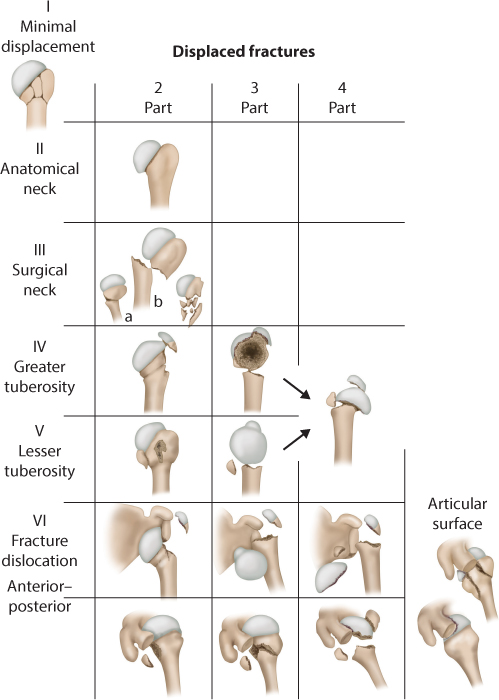


Proximal Humerus Fractures Trauma Orthobullets



Proximal Humerus Fractures Evaluation Management And Nonsurgical Treatment Sciencedirect
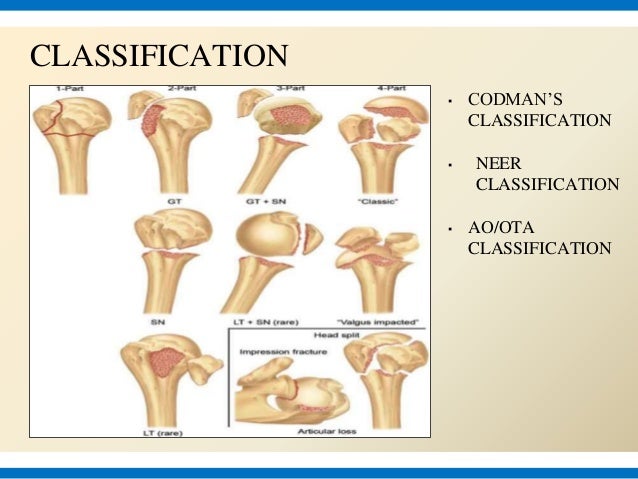


Mipo Technique For Proximal Humerus Fracture



Proximal Humerus Fracture Classification Eorif
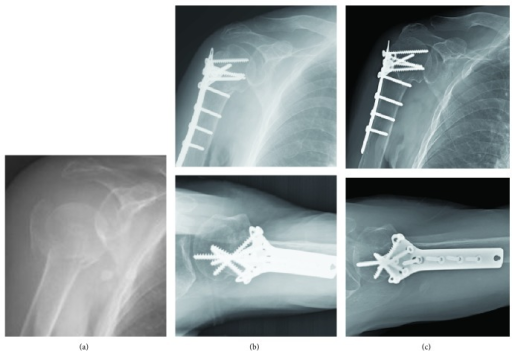


A A 71 Year Old Female Patient Sustained Right Proxim Open I



Acute Deep Venous Thrombosis And Late Onset Axillary Artery Injury After A Displaced Proximal Humerus Fracture Dislocation In An Octogenarian Patient Springerlink



Ao Humerus Proximal Fixation With Philos Plate Youtube



Proximal Humerus Fractures Trauma Orthobullets


Safe Zones



The Ao Ota Classification Consists Of Three Types Nine Groups And 27 Download Scientific Diagram
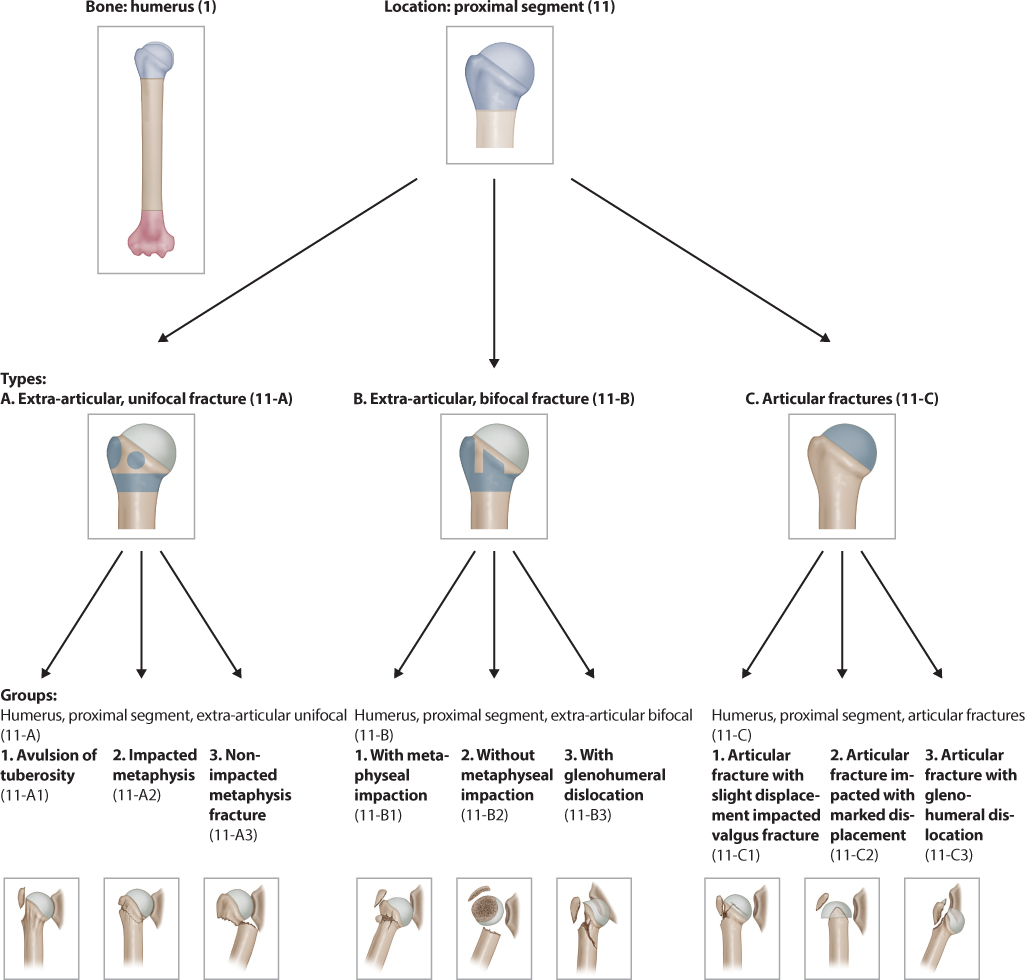


Proximal Humeral Fractures Musculoskeletal Key
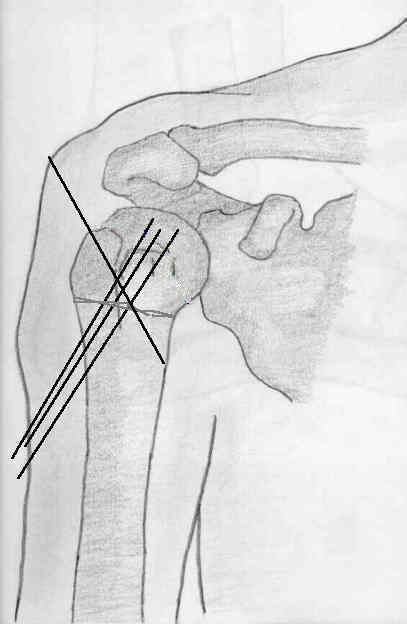


Percutaneous Pinning Of Proximal Humeral Frx Wheeless Textbook Of Orthopaedics


Ao Proximal Humerus Multifragmentary Fracture Touch Surgery


Reproducibility Of Three Classifications Of Proximal Humeral Fractures



Proximal Humerus Fracture Malunion And Nonunion Trauma Orthobullets
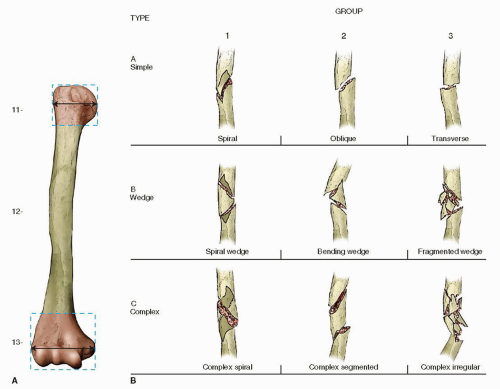


Humeral Shaft Fractures Open Reduction Internal Fixation Musculoskeletal Key



Ao Ota Classification Of Distal Humeral Fractures Radiology Reference Article Radiopaedia Org


Orif Plate Fixation Proximal 1 3 For Multifragmentary Fracture Fragmentary Segment



Ao Classification Proximal Humerus Fracture Page 1 Line 17qq Com


Deltopectoral Approach To The Proximal Humerus



A A 51 Year Old Male Patient Sustained Right Proximal Humerus Download Scientific Diagram



8 Classification Of Fractures Of The Distal Humerus A Ao Classification Download Scientific Diagram



Proximal Humeral Fractures


Ao Surgery Reference Toporthoapps



Humerus Ao Ota Classification Reprinted With Permission Copyright By Download Scientific Diagram



Figure 1 From Management Of Proximal Humeral Fractures Based On Current Literature Semantic Scholar



Epidemiology And Patho Anatomical Pattern Of 2 011 Humeral Fractures Data From The Swedish Fracture Register Bmc Musculoskeletal Disorders Full Text



Proximal Humerus Anatomy Anatomy Drawing Diagram



Proximal Humerus Fracture Core Em



Proximal Humerus Approach Deltopectoral Approach To The Proximal Humerus Ao Surgery Reference Pdf Document
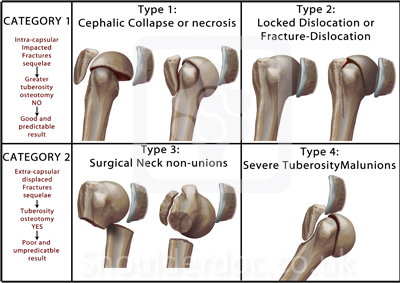


Proximal Humerus Fracture Classifications Shoulderdoc
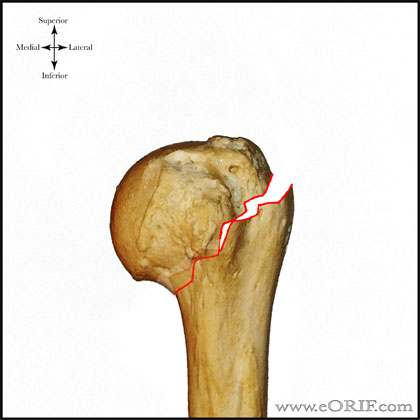


Proximal Humerus Fracture Classification Eorif
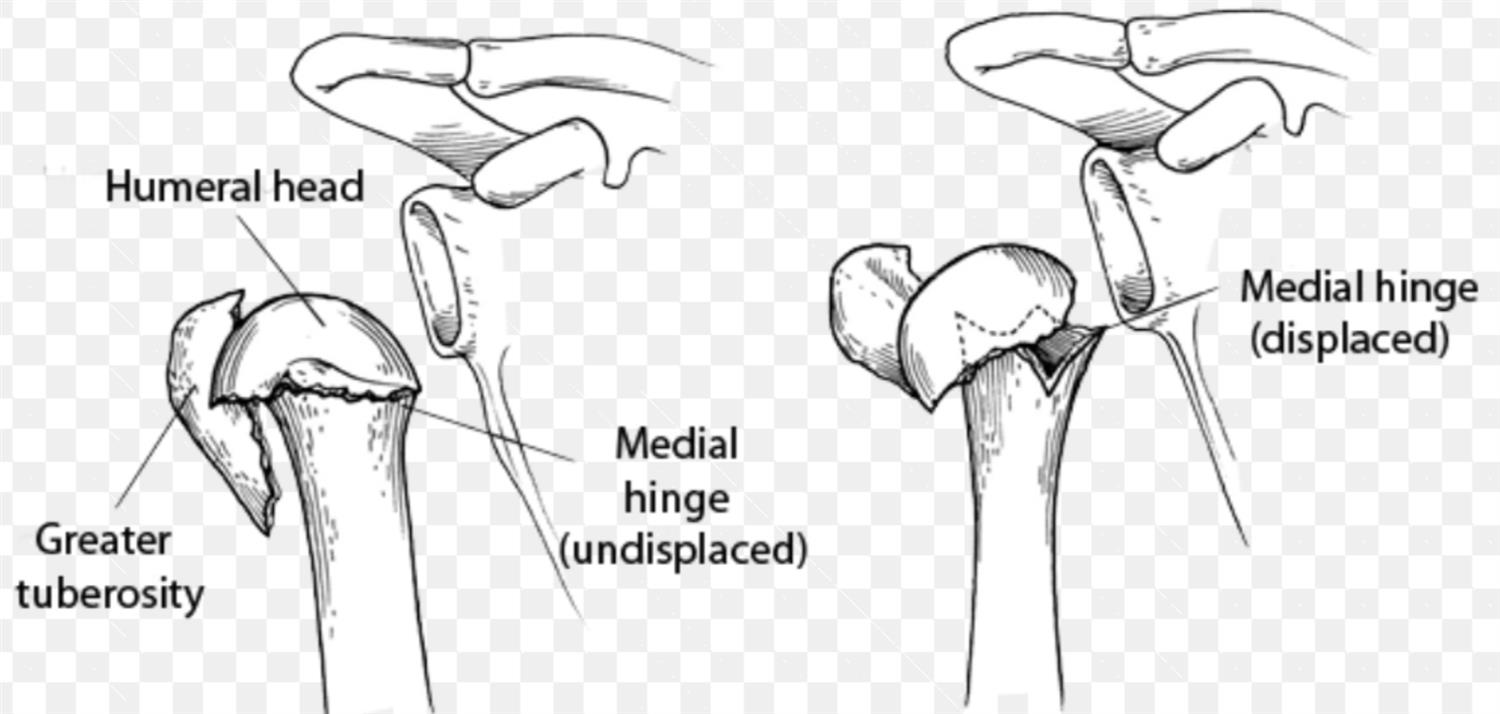


Proximal Humerus Fractures Trauma Orthobullets



Figure 6 From The Arteries Of The Humeral Head And Their Relevance In Fracture Treatment Semantic Scholar
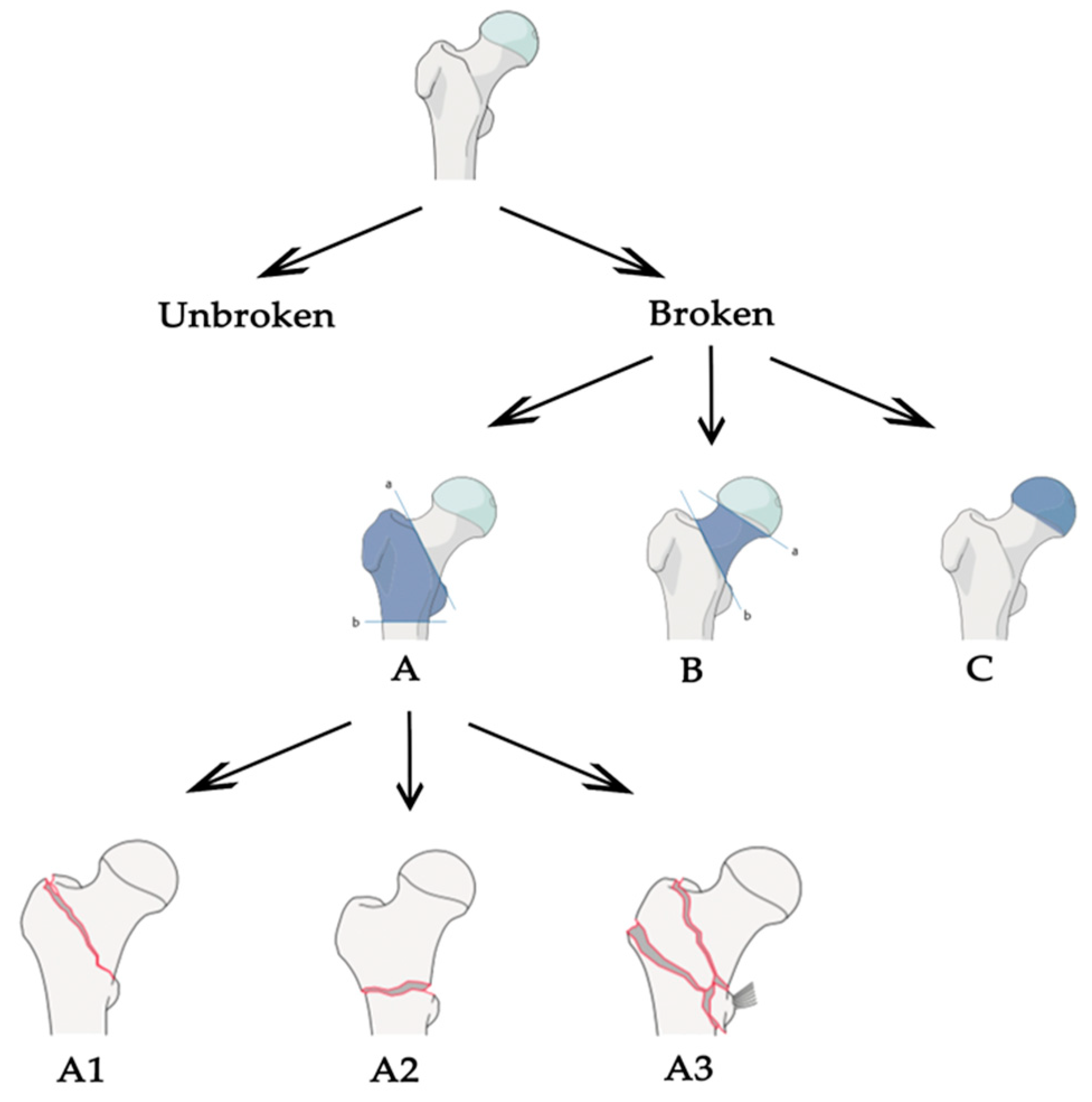


Applied Sciences Free Full Text X Ray Bone Fracture Classification Using Deep Learning A Baseline For Designing A Reliable Approach Html
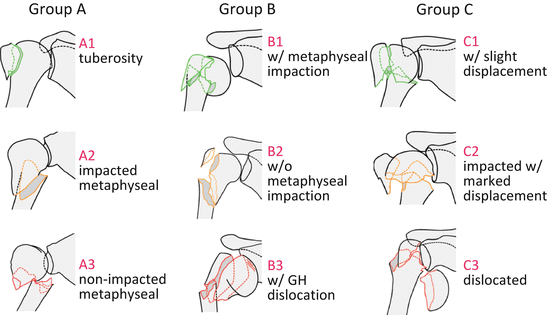


Proximal Humeral Fractures Classification And Treatment Springerlink



Operative Treatment Of 2 Part Surgical Neck Fractures Of The Proximal Humerus Ao 11 A3 In The Elderly Cement Augmented Locking Plate Philos Vs Proximal Humerus Nail Multiloc Topic Of Research Paper In



A B C And D Classification Table For Proximal Humerus Fractures Download Scientific Diagram



Translation Between The Neer And The Ao Ota Classification For Proximal Humeral Fractures Do We Need To Be Bilingual To Interpret The Scientific Literature Semantic Scholar


Nailing Straight Nail For Extraarticular 2 Part Surgical Neck No Impaction



Humerus Proximal Musculoskeletal Key



Instituts Guirado Continuity Solutions In The Proximal Humeral Third With Involvement Of The Neck And Troquiter Compatible With Ao Classification Fracture Type B2 Extra Articular Bifocal Fracture With Unimpacted Metaphyseal Fracture



Muller Ao Classification Of Fractures Wikipedia



Translation Between The Neer And The Ao Ota Classification For Proximal Humeral Fractures Do We Need To Be Bilingual To Interpret The Scientific Literature Bmc Research Notes Full Text



Clinics In Shoulder And Elbow



Proximal Humerus Shaft Fractures



Proximal Humerus Fracture Core Em
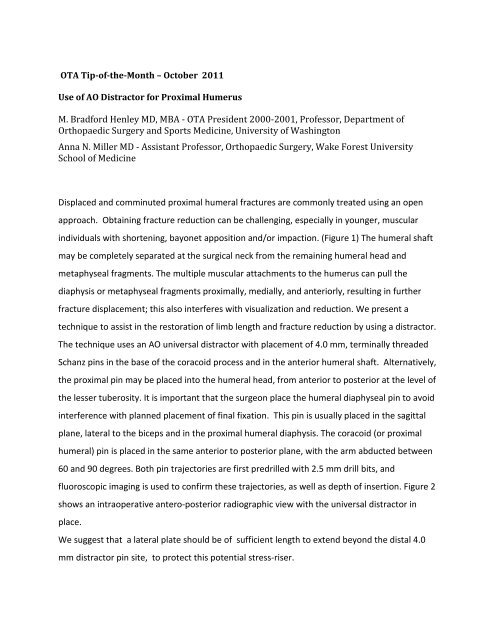


Use Of Ao Distractor For Proximal Humerus



Proximal Humerus Fractures



Proximal Humeral Fracture Dislocation Ao Classification Radiology Case Radiopaedia Org



Proximal Humerus Fractures 3d Models Used For Classification Of Download Scientific Diagram



Figure 1 From Humerus Shaft Fractures Where Are We Today Semantic Scholar



Ao Asif Fracture Classification Plastic Surgery Key



Trends In Epidemiology And Patho Anatomical Pattern Of Proximal Humeral Fractures Abstract Europe Pmc
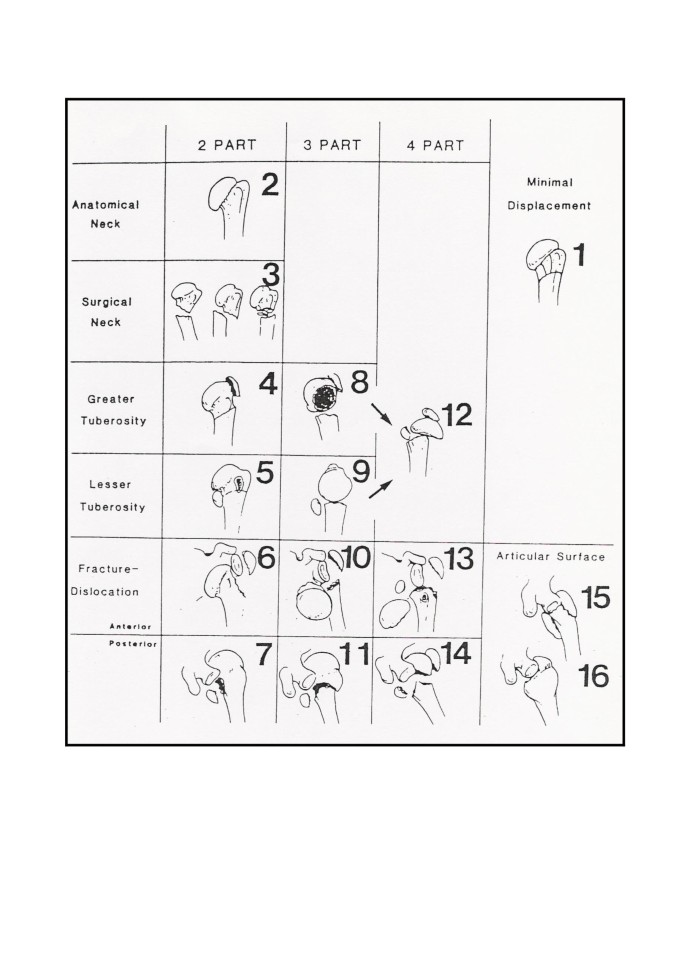


Translation Between The Neer And The Ao Ota Classification For Proximal Humeral Fractures Do We Need To Be Bilingual To Interpret The Scientific Literature Bmc Research Notes Full Text



Ao Ota Classification Of Distal Humeral Fractures Wikidoc
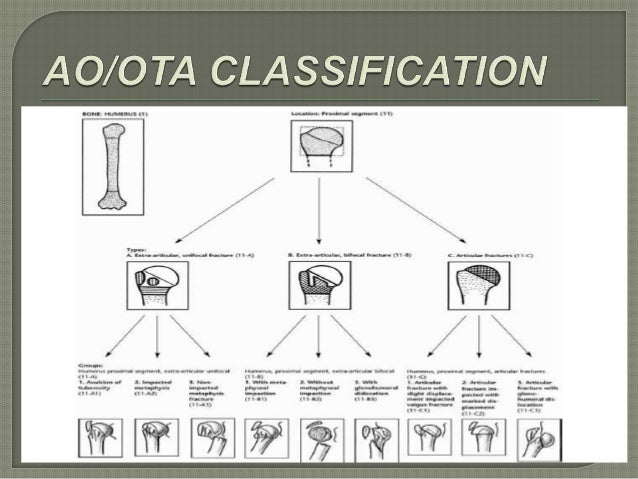


Proximal Humerus Fractures By Krr



Proximal Humerus Fractures 1 Ota Lecture Series Iii U03a Youtube


Plos One Correlation Between Classification And Secondary Screw Penetration In Proximal Humeral Fractures



The Ao Foundation And Orthopaedic Trauma Association Ao Ota Scapula Fracture Classification System Focus On Body Involvement Journal Of Shoulder And Elbow Surgery



6 2 1 Humerus Proximal Musculoskeletal Key



0 件のコメント:
コメントを投稿